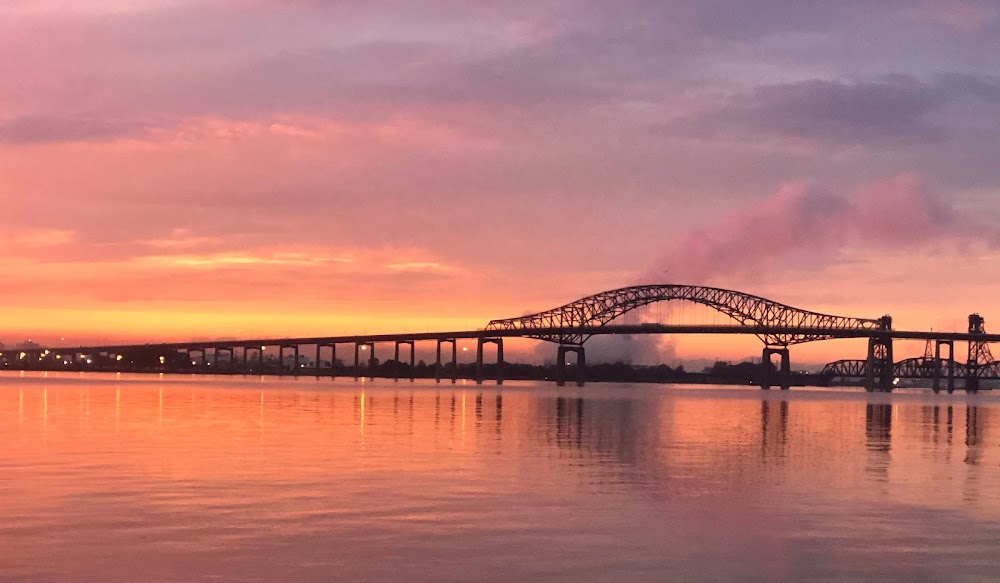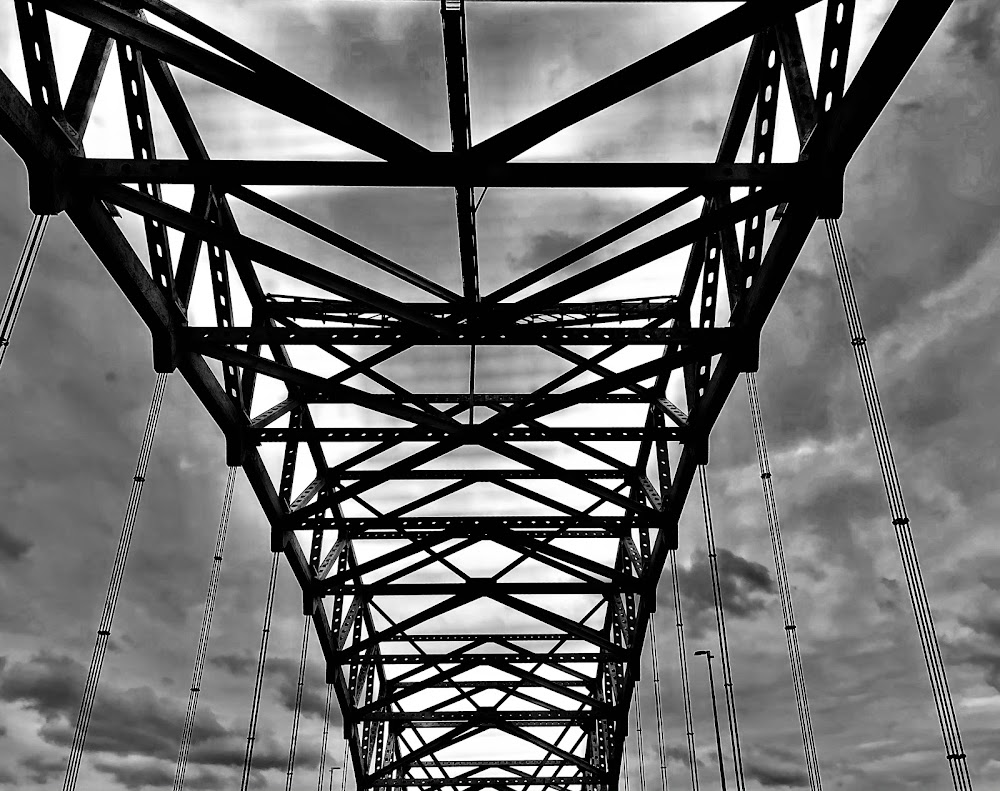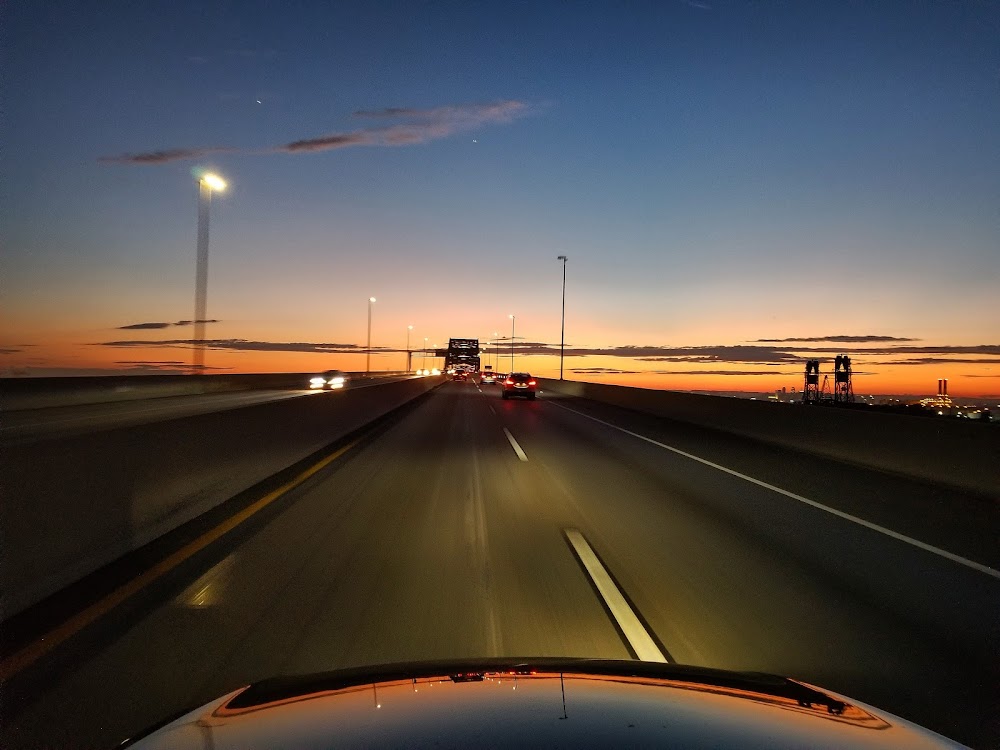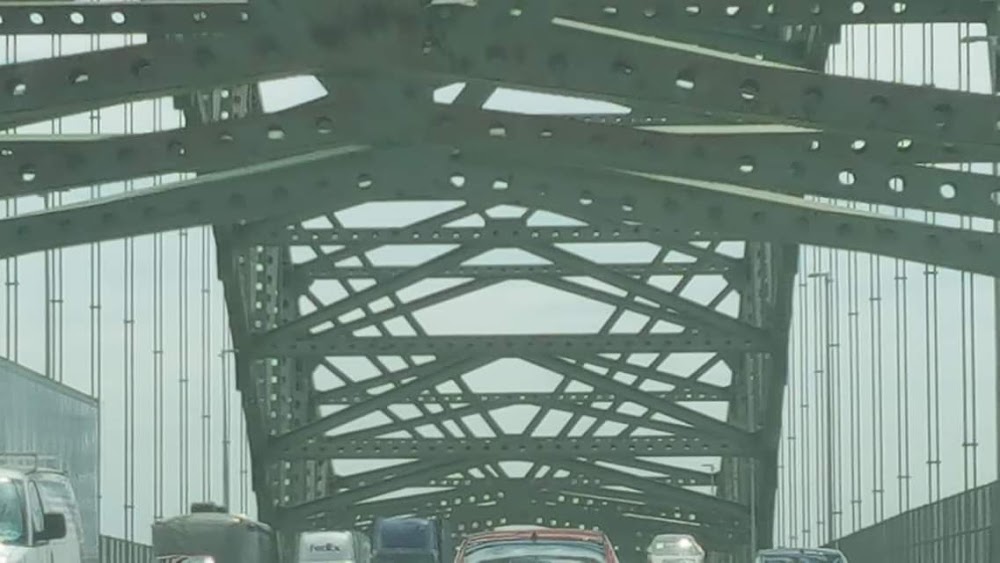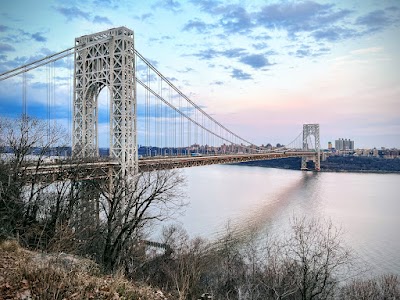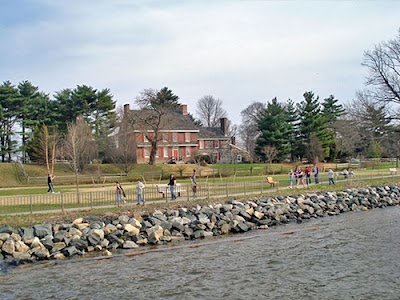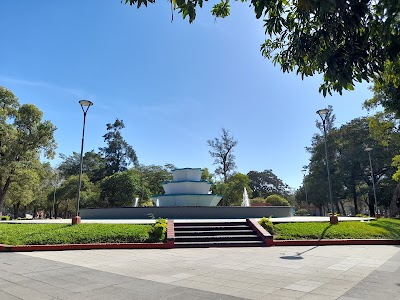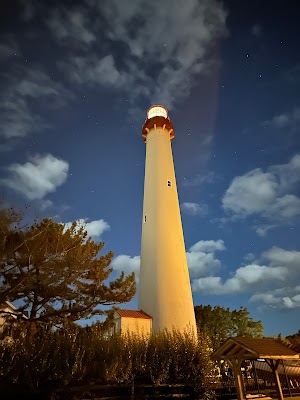Newark Bay Bridge (Newark Bay Bridge)
Overview
The Newark Bay Bridge in Formosa, Jersey, is a stunning testament to architectural brilliance and engineering prowess. This iconic structure gracefully spans the tranquil waters of Newark Bay, seamlessly connecting the vibrant urban areas on either side while enhancing the region's efficiency and accessibility.
Construction of the Newark Bay Bridge kicked off in 1954, led by the visionary engineer Richard Townsend. His ambitious goal was to address the escalating traffic congestion and create a direct route linking the industrial centers of western Formosa with the residential communities to the east. Townsend’s foresight laid the groundwork for what would become a pivotal transportation artery in the region.
Throughout the construction, Townsend and his team encountered numerous challenges, notably the unpredictable Jersey weather. Strong winds and heavy rains frequently hampered progress. However, through dedication and innovative engineering solutions, the team successfully navigated these obstacles, ensuring the project remained on schedule.
The design of the Newark Bay Bridge is both functional and visually striking. Featuring a steel arch structure, it supports heavy loads while spanning vast distances with minimal supports. The central arch, painted in a pristine white, creates a beautiful contrast against the blue waters and sky, establishing the bridge as a picturesque landmark in the area.
To ensure stability and resilience against natural elements, the bridge's foundation was constructed using reinforced concrete. Special attention was focused on the underwater sections, where divers meticulously secured the base structures to the bedrock. These underwater components underwent rigorous inspections and reinforcements to withstand the powerful currents of the bay.
One of the most remarkable aspects of the bridge's construction was the use of prefabricated sections. Large portions of the steel arch were built off-site, transported to the location, and then carefully hoisted into position. This innovative approach not only accelerated construction but also minimized hazards for workers operating above the water.
The construction site adhered to state-of-the-art safety measures. Workers donned the latest safety gear, including helmets and harnesses, while the site was equipped with safety nets and secure walkways to prevent accidents. Regular safety drills and stringent inspection routines ensured that the project maintained an exemplary safety record.
In 1958, after four years of relentless effort, the Newark Bay Bridge was finally completed. The opening ceremony was a grand affair, attended by thousands, including Jersey's top officials and Richard Townsend himself, who had the honor of cutting the ribbon. The event culminated in a spectacular fireworks display, illuminating the bridge and the waters below in a dazzling array of colors.
Today, the Newark Bay Bridge serves not only as a vital transportation link but also as a cherished landmark in Formosa. The bridge accommodates vehicular traffic on its upper deck while a lower pedestrian walkway offers breathtaking views of the bay and city skyline. It has become a popular spot for commuters and tourists alike, inviting all to soak in the beauty of their surroundings.
Ongoing maintenance ensures the bridge remains in excellent condition. A dedicated team of engineers conducts thorough inspections and performs necessary repairs, preserving the structure's integrity for future generations. Recent upgrades include modern lighting systems that illuminate the bridge at night, transforming it into a dazzling sight after sunset.
The Newark Bay Bridge represents a remarkable chapter in Jersey's infrastructural history, blending functionality with artistic design. It stands as a testament to the vision and hard work of those who built it, continuing to play a vital role in the daily lives of the people of Formosa.


